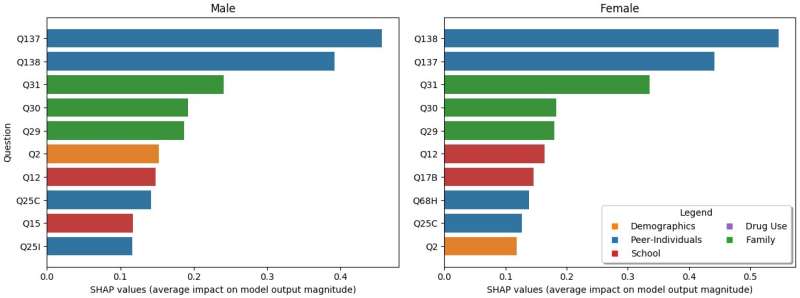Fig 7. The top 10 most important questions for males vs females. Credit: Weller et al., 2021, PLOS ONE, CC-BY 4.0 (creativecommons.org/licenses/by/4.0/)
Researchers have developed a new, machine learning-based algorithm that shows high accuracy in identifying adolescents who are experiencing suicidal thoughts and behavior. Orion Weller of Johns Hopkins University in Baltimore, Maryland, and colleagues present these findings in the open-access journal PLOS ONE on November 3rd, 2021.
Decades of research have identified specific risk factors associated with suicidal thoughts and behavior among adolescents, helping to inform suicide prevention efforts. However, few studies have explored these risk factors in combination with each other, especially in large groups of adolescents. Now, the field of machine learning has opened up new opportunities for such research, which could ultimately improve prevention efforts.
To explore that opportunity, Weller and colleagues applied machine-learning analysis to data from a survey of high school students in Utah that is routinely conducted to monitor issues such as drug abuse and mental health. The data included responses to more than 300 questions each for more than 179,000 high school students who took the survey between 2011 to 2017, as well as demographic data from the U.S. census.
The researchers found that they could use the survey data to predict with 91 percent accuracy which individual adolescents' answers indicated suicidal thoughts or behavior. In doing so, they were able to identify which survey questions had the most predictive power; these included questions about digital media harassment or threats, at-school bullying, serious arguments at home, gender, alcohol use, feelings of safety at school, age, and attitudes about marijuana.
The new algorithm's accuracy is higher than that of previously developed predictive approaches, suggesting that machine-learning could indeed improve understanding of adolescent suicidal thoughts and behavior—and could thereby help inform and refine preventive programs and policies.
Future research could expand the new findings by using data from other states, as well as data on actual suicide rates.
The authors add: "Our paper examines machine learning approaches applied to a large dataset of adolescent questionnaires, in order to predict suicidal thoughts and behaviors from their answers. We find strong predictive accuracy in identifying those at risk and analyze our model with recent advances in ML interpretability. We found that factors that strongly influence the model include bullying and harassment, as expected, but also aspects of their family life, such as being in a family with yelling and/or serious arguments. We hope that this study can provide insight to inform early prevention efforts."
More information: Weller O, Sagers L, Hanson C, Barnes M, Snell Q, Tass ES (2021) Predicting suicidal thoughts and behavior among adolescents using the risk and protective factor framework: A large-scale machine learning approach. PLoS ONE 16(11): e0258535. doi.org/10.1371/journal.pone.0258535
Journal information: PLoS ONE
Provided by Public Library of Science
























